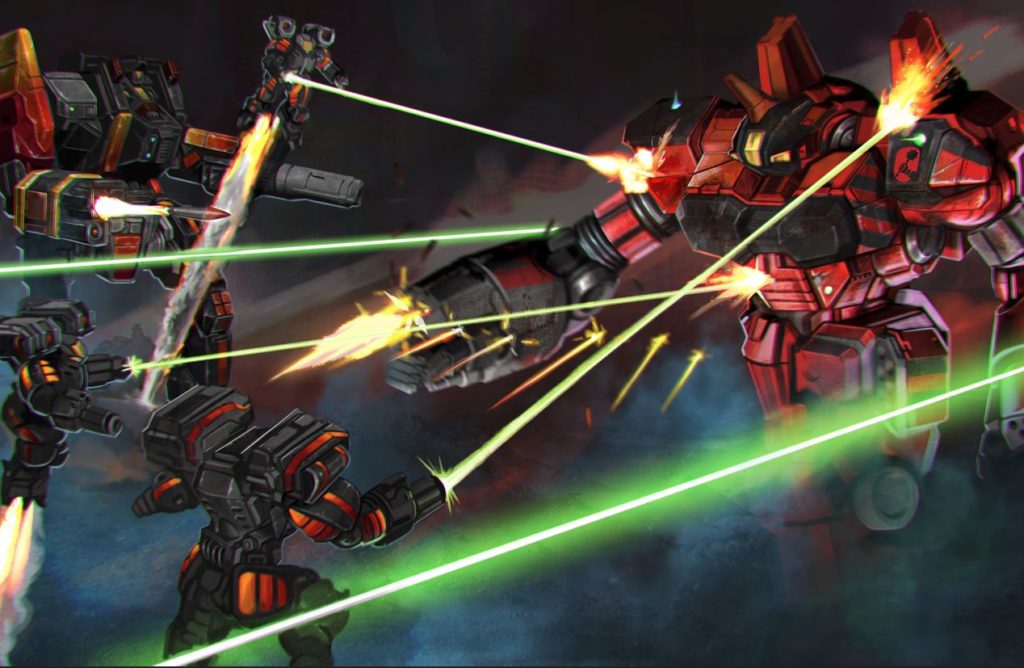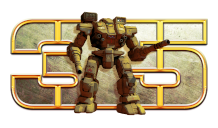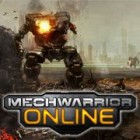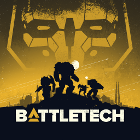- Home
- New To BattleTech?
- MUL
- Forums
- News
- Books
- Shrapnel
- Universe
- Downloads
- Characters
- Community
- Errata
- Links
- Gallery
Tamar Rising Preview: A Bright New Era
On January 18, 2022
Specifics changed, details shifted, but the final result of The ilClan sourcebook was known from the start: an ilClan would rise. The book’s title wasn’t a fake-out or an ironic gag. The Dark Age era would indeed end with one Clan in possession of Terra, having achieved the purpose of Clan society.
Less clear was: what now?
When I became BattleTech Line Developer, my first responsibility was to shepherd the elements of the Clan Invasion Kickstarter across the finish line. Right behind that was the need to get ilClan out on the streets. But behind it all was that question, as we got to work on the first sourcebooks of our new ilClan era. What now?
I knew a few things from the start.
For one, I didn’t want to go right back to Terra and continue Alaric’s story. The simple fact is that Hour of the Wolf brought such massive change to the Inner Sphere that we couldn’t keep plowing ahead with more about Alaric and Terra until we took a close look at the fallout from Hour and the ripples—or in some cases, tidal waves—that the fall of Terra radiated across the setting.
Along those lines, I wanted to bring the scope of the next few sourcebooks back down to a “regional” level, without tying them each to a specific faction one by one. It was important to me and the other top developers that there be more conflict in the setting, but at a scale much below a single, “universe-shaking” story. Yes, Alaric and his ilClan are now at the (literal) center of the setting. But there are many other characters with their own agendas, who aren’t gonna politely sit around and do nothing as if Alaric’s story is the only one worth telling.
That goal dovetailed nicely with another objective: using these next few sourcebooks to create many, many hooks for games on your own tabletop. Big, star-spanning metastories have been a part of BattleTech from the start, fueling incredible fiction for decades. But sourcebooks are first and foremost products meant to support the tabletop game. There’s still a robust history section in Tamar Rising which details the “factual” events in that region of space. However, we paid close attention to providing an amount and level of conflict that would better translate to building games on your own tabletop.
So, those were my big-picture goals. But, where to start?
Fortunately, Hour of the Wolf provided the perfect answer.

In Hour (available in print and e-pub now!), author Blaine Lee Pardoe set forth some huge story hooks. As Khan Malvina Hazen and Clan Jade Falcon surged toward Terra, Blaine made it clear that the Falcons stripped virtually all battle-ready warriors from their worlds. The whole touman went to Terra—and all but a few dozen of its warriors died there. Whatever may become of the remaining Falcons on Terra, there was absolutely no chance that they could simply return to their long-conquered worlds. The Jade Falcon Occupation Zone as it stood for a century would shatter.
Among all the other effects Hour would have on the setting, this was perhaps the most immediate and dramatic, and I knew it was the one we had to deal with first. The rich opportunity for conflict in this new, all-but-unclaimed region of space fit perfectly with the goals I discussed above. Even better, the former OZ was so wide open that it could plausibly give rise to all-new factions, viable smaller powers seeking to establish themselves in the chaos. All that’s needed were characters bold enough to step forward and seize the opportunity before them.
If there’s a common thread throughout Tamar Rising, and perhaps across the ilClan era, it’s that character-driven boldness. BattleTech is defined by its larger-than-life characters, and we wanted to bring them back to the fore to tell these new stories. It’s all too easy for sourcebooks to fall into dry recitations of Regiment A attacking Planet B to move Border C. We wanted to make our stories feel like extensions of identifiable character motivation—these are people, who hope and dare and fail and fall and rise again, not just colors on a map. I think you’ll see that throughout Tamar and throughout this new era.
Finally, it was important to me that we strive to keep the tenets of the “hard science” universe intact. The ongoing Blackout creates numerous headaches in storytelling, believe me, and it’s tempting to bend the realities of slow communications to make stories work. But until the Blackout is over (we’re working on it!), we want to enforce the boundaries we’ve set for ourselves. In many ways, the Blackout supports the goal of emphasizing bold, individual characters—an entire faction cannot “react” to a new development, but well-placed commanders can take it upon themselves to make the most of an opportunity.
There’s so much to explore in Tamar Rising, and I can’t wait to get it into your hands this week. You’ll find a full history section, an atlas of key worlds, faction and personality profiles, campaign rules and random assignment tables, and a detachable regional map unlike anything we’ve tried before.
I’m sure you’ll have more questions about the book once you’ve started that exploration, so we have a AMA session all about Tamar Rising with its development and writing team coming soon. Stay tuned for details!
Tamar Rising is just the first step in a bright new era of BattleTech, and there’s so much more to show you. Next up is a look at the Wolf Empire and Free Worlds League in Empire Alone, currently at the printers and due for release later this year. Then, dramatic developments across the Federated Suns, Draconis Combine, and Rasalhague Dominion will be detailed in the third ilClan era sourcebook, Dominions Divided.
I feel these are some of the best BattleTech sourcebooks in recent memory, and I hope they bring you many hours of enjoyment at your gaming tables.
Sincerely,
Ray Arrastia, BattleTech Line Developer
Arcturus
Tamar Pact
18 January 2022








